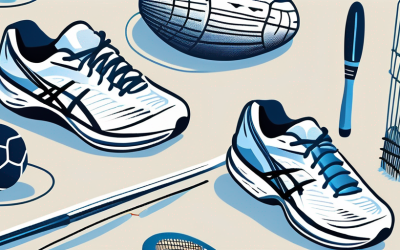Soft tissue healing is a complex and fascinating process that occurs daily in our bodies. Whether it’s a minor cut or a more severe injury, our body has an innate ability to repair and regenerate damaged tissues.
This article will delve into the basics of soft tissue healing from a chiropractic perspective, exploring the various stages of the healing process and the role chiropractic care plays in accelerating and supporting this natural process.
The Basics of Soft Tissue Healing
Soft tissue healing is a complex and fascinating process that involves a series of intricate steps. When an injury occurs, whether it’s due to trauma or overuse, the body immediately springs into action to initiate the healing process. This process consists of three main stages: inflammation, tissue formation, and tissue remodeling.
During the initial stage of soft tissue healing, inflammation takes center stage. It may seem counterintuitive, but inflammation is a crucial step in healing. When an injury occurs, the body responds by sending an army of immune cells to the affected area. These cells work tirelessly to remove debris, dead cells, and bacteria, ensuring a clean and sterile environment for healing.
Moreover, inflammation also stimulates the release of growth factors essential for tissue repair. These growth factors act as messengers, signaling the body to produce new cells and blood vessels. This intricate process sets the stage for the next stage of healing: tissue formation.
New cells and blood vessels grow during the tissue formation stage, constructing a temporary scaffolding called granulation tissue. This tissue serves as a foundation for the subsequent phases of healing. It provides a framework for replacing the damaged tissue with stronger and more organized collagen fibers.
As the healing progresses, the body enters the final stage of soft tissue healing: tissue remodeling. During this phase, the body uses collagen cross-linking to improve tissue strength. Collagen, a protein found abundantly in our bodies, is crucial in providing structural support to tissues. By cross-linking collagen fibers, the body ensures that the healed tissue is capable of withstanding the demands placed upon it.
It’s important to note that complete tissue remodeling can take several months, depending on the severity of the injury. Soft tissue healing is a meticulous and time-consuming process that requires patience and proper care.
The Role of Inflammation in Soft Tissue Healing
While inflammation may initially be perceived as a negative aspect of the healing process, it is, in fact, a vital step in initiating and facilitating tissue repair. Inflammation is crucial in soft tissue healing by recruiting various cells and substances to the injured area.
When an injury occurs, the body’s immune system responds by releasing chemical signals that attract immune cells to the injury site. These immune cells, such as neutrophils and macrophages, are crucial in removing debris and damaged tissue. They also release growth factors and other molecules that stimulate new tissue growth.
Chiropractors understand the importance of inflammation in soft tissue healing and employ techniques that support the body’s natural inflammatory response. By effectively managing inflammation, chiropractic care can help mitigate pain and swelling while optimizing the healing process.
The Importance of Proper Nutrition and Hydration in Tissue Repair
Proper nutrition and hydration are vital elements in supporting soft tissue healing. The body’s ability to repair and rebuild tissues is hindered without adequate nutrients and hydration.
The body requires more energy and nutrients to fuel tissue repair during healing. Proteins, for example, are the building blocks of tissues and are essential for collagen synthesis. Consuming a balanced diet that includes an adequate amount of protein, along with other essential nutrients, is crucial for optimal tissue repair.
Hydration is equally important in supporting soft tissue healing. Water plays a vital role in maintaining the structural integrity of tissues and facilitating various metabolic processes. Staying hydrated ensures the body has enough fluid to transport nutrients and remove waste from the injured area.
Chiropractic care teaches patients the importance of nourishing their bodies with a balanced diet and staying hydrated to ensure optimal tissue repair and recovery. Chiropractors can guide dietary choices and offer recommendations to support the body’s healing process.

Chiropractic Approaches to Accelerate Healing
Chiropractic care offers a variety of approaches to accelerate the soft tissue healing process. One common technique employed by chiropractors is spinal manipulation. Spinal manipulation improves nerve function and enhances the body’s ability to heal injured tissues by restoring proper alignment and mobility to the spine.
In addition to spinal manipulation, chiropractors may utilize a range of soft tissue therapies such as massage, myofascial release, and stretching exercises. These therapies help to reduce muscle tension, improve blood flow, and promote the dispersal of inflammatory substances, thereby expediting soft tissue healing.
Chiropractors also recognize the interconnectedness of the different systems in the body. They take a holistic approach to healing, addressing the injured area and any underlying factors contributing to delayed healing, such as poor posture, muscle imbalances, or nutritional deficiencies.
When it comes to soft tissue healing, active rehabilitation plays a crucial role. Under the guidance of a chiropractor, patients are provided with tailored exercise programs designed to improve strength, flexibility, and overall function. These exercises not only aid in tissue repair but also help to prevent future injuries by promoting optimal biomechanics and body awareness.
Electrotherapy, such as ultrasound and electrical muscle stimulation, is another chiropractic approach that can enhance tissue healing. These modalities help reduce pain, relax muscles, and improve circulation, ultimately promoting a more efficient healing process.
Spinal Manipulation: Unlocking the Body’s Healing Potential
Spinal manipulation, or chiropractic adjustment, is a cornerstone of chiropractic care. This hands-on technique involves applying controlled force to specific joints in the spine to restore proper alignment and mobility. By doing so, chiropractors aim to alleviate pain, improve nerve function, and accelerate healing.
During a spinal manipulation, the chiropractor will use their hands or a specialized instrument to apply a quick, controlled thrust to the targeted joint. This action helps release trapped gases within the joint, creating a popping or cracking sound often associated with chiropractic adjustments.
By restoring proper alignment to the spine, spinal manipulation reduces stress on the surrounding soft tissues, allowing them to heal more effectively. It also improves joint mobility, enhancing the delivery of nutrients and oxygen to the injured area, further supporting the healing process.
Soft tissue therapies, such as massage, myofascial release, and stretching exercises, are frequently used with spinal manipulation to optimize healing outcomes. These therapies help to address muscle imbalances, reduce scar tissue formation, and improve overall tissue flexibility, all of which contribute to faster healing and improved function.
A Holistic Approach to Healing: Addressing Underlying Factors
Chiropractors understand that true healing goes beyond just treating the symptoms. They take a holistic approach, considering the interconnectedness of the different systems in the body and addressing any underlying factors that may be hindering the healing process.
One common underlying factor that chiropractors address is poor posture. Poor posture can place excessive stress on the muscles, ligaments, and joints, impeding healing. Chiropractors may provide postural education and recommend specific exercises and stretches to improve posture and alleviate stress on the injured tissues.
Muscle imbalances can also contribute to delayed healing. Chiropractors assess the strength and flexibility of different muscle groups and design exercise programs to correct these imbalances. By strengthening weak muscles and stretching tight ones, chiropractors help restore balance to the musculoskeletal system, promoting optimal healing.
Nutritional deficiencies can also impede the healing process. Chiropractors may evaluate a patient’s diet and recommend dietary changes or supplementation to ensure the body has the necessary nutrients for tissue repair. They may also guide anti-inflammatory foods that can support healing and reduce inflammation in the injured area.
Active Rehabilitation: Empowering Patients in Their Healing Journey
Active rehabilitation is vital to chiropractic care for accelerating soft tissue healing. Through functional rehabilitation, patients are actively involved in their healing journey, working closely with their chiropractor to improve strength, flexibility, and overall function.
Chiropractors design personalized exercise programs tailored to the specific needs of each patient. These programs may include a combination of strength training exercises, stretching routines, and functional movements to improve stability and mobility in the injured area.
By engaging in active rehabilitation, patients promote tissue repair and develop body awareness and optimal biomechanics. This, in turn, helps prevent future injuries and promotes long-term musculoskeletal health.
Electrotherapy: Harnessing the Power of Technology for Enhanced Healing
In addition to manual therapies, chiropractors may incorporate electrotherapy modalities to enhance soft tissue healing. Two commonly used electrotherapy modalities are ultrasound and electrical muscle stimulation.
Ultrasound therapy involves using high-frequency sound waves that penetrate deep into the tissues. This modality can help reduce pain, increase blood flow, and promote tissue relaxation, all contributing to faster healing.
On the other hand, electrical muscle stimulation uses electrical currents to stimulate muscle contractions. This modality can help strengthen weak muscles, reduce muscle spasms, and improve overall muscle function, aiding in healing.
Chiropractors carefully assess each patient’s condition and determine the most appropriate electrotherapy modality for their needs. These modalities are safe, non-invasive, and can be used with other chiropractic approaches to optimize healing outcomes.
Common Soft Tissue Injuries and Their Treatments
Soft tissue injuries can occur in various parts of the body and are often a result of trauma, repetitive motion, or poor ergonomics. Some common soft tissue injuries include strains, sprains, tendonitis, and bursitis. Each of these injuries requires specific treatment tailored to the affected area and the extent of the damage.
Chiropractic care offers a comprehensive approach to treating soft tissue injuries. Depending on the injury, chiropractors may employ a combination of spinal adjustments, soft tissue therapies, rehabilitation exercises, and lifestyle modifications to facilitate healing and restore function.
Strains and Sprains: Restoring Mobility and Function
Strains and sprains are common soft tissue injuries involving muscle damage, tendon, or ligament damage. Chiropractors can help restore mobility and function in injured areas by utilizing joint mobilization, muscle release techniques, and rehabilitative exercises. These approaches aim to reduce pain, improve range of motion, and promote tissue healing.
Tendonitis and Bursitis: Easing Inflammation and Promoting Recovery
Tendonitis and bursitis are inflammatory conditions that affect tendons and bursae, respectively. Chiropractic care can help ease inflammation and promote recovery through various modalities such as ultrasound therapy, soft tissue mobilization, and targeted stretching exercises. By addressing the underlying cause of inflammation and facilitating tissue repair, chiropractors play a vital role in restoring the health and function of injured soft tissues.
Long-Term Strategies for Soft Tissue Health
Soft tissue health is essential during healing to prevent future injuries and maintain overall well-being. Chiropractors advocate for proactive measures that promote delicate tissue health and reduce the risk of injury.
Regular chiropractic adjustments help maintain proper spinal alignment, ensuring optimal nerve function and reducing the risk of soft tissue injuries. Additionally, chiropractors may guide ergonomics, exercise, and stretching routines tailored to individual needs, which can help prevent muscle imbalances, repetitive strain injuries, and other soft tissue problems.
Furthermore, promoting a healthy lifestyle is paramount for soft tissue health. Adequate hydration, balanced nutrition, and regular physical activity are essential factors that contribute to optimal tissue function and resilience. Chiropractors work with patients to develop personalized strategies that support long-term soft tissue health and overall wellness.
The Power of Prevention: Soft Tissue Health for Life
Understanding soft tissue healing from a chiropractic perspective empowers individuals to take control of their health and embrace proactive measures for injury prevention. By implementing chiropractic principles and techniques, individuals can enjoy improved soft tissue healing, reduced pain, enhanced function, and an overall higher quality of life.
Soft tissue healing is a remarkable process that encompasses various stages and factors. With chiropractic care, individuals can harness the body’s innate healing abilities and optimize tissue repair, ensuring a healthier and more vibrant future.



